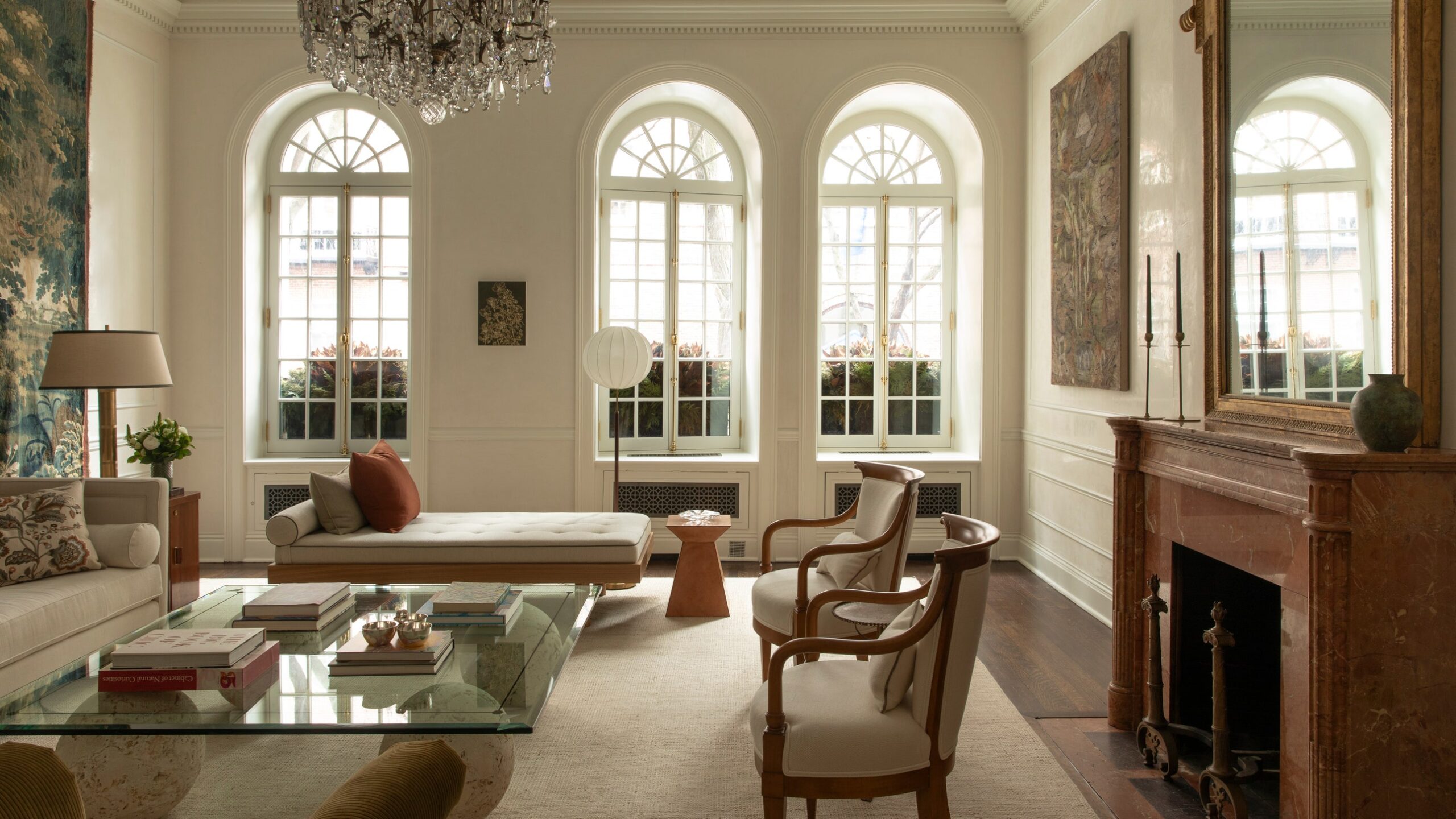It can be all too easy to fall into a sea of design samenessâchasing trends and ending up with a space that looks beautiful but lacks soul. Thatâs far from the approach of Hadley Wiggins, the self-taught design maven and AD100 talent who is quietly making waves with her wholly original, highly textured, and delightfully hard-to-define aesthetic.
Wigginsâs latest project, a stately limestone town house on Manhattanâs Upper East Side, perfectly encapsulates her inimitable style. The home, inhabited by a family with two young children, required a deft hand to honor its historic bones while imbuing the space with softness, warmth, and personality.
âWhen it was purchased, the house had all of its original detailsâmoldings, windows, fireplace surrounds. But it had undergone a well-meaning yet stark renovation that felt very optic white,â Wiggins explains. âThe goal was to make more nuanced choices to create contrast and visual interest without distracting from the inherent beauty of the architecture.â
The designer achieved this through an intriguing interplay of subtle tones punctuated by strategic moments of saturation. Richly hued spaces like the dining roomâWigginsâs favorite of her career thus farâserve to âcompressâ the homeâs sprawling layout. âWith a home this size, you have ample opportunity to carve out those airy, light-filled moments. Then you get to decide where you want to create coziness and intimacy,â she says.
The common thread that weaves the homeâs diverse palette together is Wigginsâs curation of furnishings, art, and objects (achieved with the help of art advisor Kate Bellin). Each room features an eclectic mélange of pieces of various eras, styles, and provenancesâa signature of the designerâs approach.
âI very rarely go shopping with a specific look or piece in mind. I buy things that speak to me, and then I work to find their rightful place in a space,â Wiggins says. âThe goal is to strike enough diversity that you unlock yourself from strict parameters. The question becomes less about adhering to a singular aesthetic, and more about balancing tone, weight, and that intangible special something.â
This method lends the home a collected qualityâeach piece feels like a treasured find the homeowners have amassed over a lifetime. Standouts include the living roomâs antique tapestry, which serves as a Rosetta stone of sorts for the space, an oil painting that acts as its perfect foil, and an array of lighting that spans the style spectrum.
Equally impressive is Wigginsâs facility with pattern and texture, honed during her years at Ralph Lauren. âIncorporating pattern is never easyâin an average room you may need to make five key fabric choices, and every single one needs to tick a host of boxes in terms of design, durability, and client approval. Itâs an immense puzzle, but the payoff is so worth it,â she says.
This approach extends to even the most functional of spaces, as evidenced by the homeâs powder room. Anchored by a striking custom wood vanity and matching toilet seat, the moody, cocoon-like space proves Wigginsâs theory that a powder room âis not about function; itâs about feeling incredible.â
And while the homeâs exquisite detailing and bespoke elements are certainly incredible, Wiggins never loses sight of the fact that this is first and foremost a family home. âIâm not doing my job if I create a museum. The beauty of this space is that it can handle the âoopsesâ of life. It can evolve, it can wear, and it will only get better over time,â she muses.
Itâs this unique alchemyâthe push-pull between elegance and approachability, history and modernity, specificity, and serendipityâthat marks Wigginsâs work. She adds, âI spend a lot of time looking for pieces that are beautiful because they are old and worn. That spirit of imperfect perfection is something I strive for in every space.â

